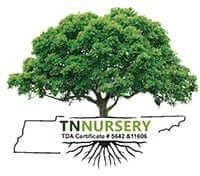
Fireflies in the Garden
Share
Fireflies in the Garden: How to Bring in these Shining Insects with Native Plants
They're mesmerizing and enchanting, particularly at dusk, especially for children. The flash of fireflies signals the promise of summer nights across many parts of the country. But fireflies are not just delightful garden companions-they are also an indicator of a healthy garden. What's the best way to encourage them to come out and light up your yard? Native plants.
Below, we'll learn more about these twinkling beetles and how to create a landscape that welcomes them in-native plants that draw them in and keep them shining and healthy.
From Light to Life
Unfortunately, fireflies are dwindling in numbers. Pesticides, light pollution, and loss of habitat all threaten their survival. Gardens, particularly native gardens that are managed organically and devoid of chemicals, provide safe spaces. Fireflies love a moist, shady garden that has ample organic matter. They use the soil for their larvae to eat and feed on tiny insects, snails, and slugs.
Native plants create a diverse landscape, with life at all levels. Their growing, dying, and fallen matter create a habitat for the soil and all of its life forms. A maniacally manicured lawn or chemical laden yard is a haven for nothing except monocultures and hungry insects. If you have plenty of nectar and pollen in your yard, you are creating a healthier, thriving garden that can be home to fireflies.
Native Plants that are Known to Attract Fireflies
Native plants are key to firefly conservation because they help create the layering, diversity, and health that fireflies need. Here are a few natives that are known to increase firefly activity:
Virginia Bluebells (Mertensia virginica)
An early blooming plant that provides cover and nectar early in the season. Fireflies will find shelter from sunlight in the plants' leaves.
Spicebush (Lindera benzoin)
Spicebush is a low-branching native shrub that grows in moist woodland habitats. Its shade and soil moisture are exactly what fireflies need, as well as their leaves provide food for many species of moth caterpillars.
Wild Ginger (Asarum canadense)
A ground cover that provides a thick blanket of shade and leaves that shelter firefly larvae. It also provides deep, cool soil and leaves that inhibit weed invasions.
Christmas Fern (Polystichum acrostichoides)
A lush evergreen native fern that loves shady, woodland edges. Its mass of thick, horizontal leaves and leaves creates shade and maintains moisture in the soil. Fireflies love to hide under its large, upright fronds.
Swamp Milkweed (Asclepias incarnata)
Not just a monarch food plant. Swamp milkweed grows tall and supports a range of pollinators. It shelter for a wide range of native butterflies and other insects, including adult fireflies. Its flowers add height and structure to the garden and make it easier for adult fireflies to signal to each other.
Goldenrod (Solidago spp.)
Goldenrod blooms in late summer. Its blooms are a visual feast for pollinators in late summer. As a native plant, goldenrod helps attract pollinators in fall, providing nectar resources for insects when fireflies are laying eggs and young are mating.
Designing a Firefly Friendly Garden
There's no need to transform your entire yard into a butterfly oasis. Here are some basic tips to keep in mind when designing a garden to attract fireflies:
Reduce lighting outside: Lighting can disrupt fireflies and obscure their ability to send out their light messages. Instead, use motion-sensitive lighting or bulbs that are angled downwards. You can also switch off lights after dusk.
Layering: Fireflies need tall plants to perch on, as well as a ground layer of low-growing plants. Add some shrubs, native grasses, ferns, and perennials to your garden for the most benefit.
Moisture: Moisture is key. Don't let your garden soil dry out. Instead, add compost and mulch to help keep the soil moist. Also, use native plants that are water-loving such as Joe Pye Weed, Blue Flag Iris, or sensitive ferns.
Don't use pesticides: Pesticides can damage the food web. Firefly larvae are a part of the soil food web, and by limiting pesticides, you'll keep more prey in the soil for them to feed on.
Leave some dead leaves: Firefly larvae live in the soil. When you clean up all of your fallen leaves, you take away the shelter and warmth that larvae need. Leave a corner of your garden with some organic matter and rotting wood.
Fireflies and Our Soil: An Educational Connection
Fireflies are part of our ecosystems. Their presence tells us that soil and water are doing well. According to the Entomology Department at the University of Florida, fireflies are considered "bioindicators" of an ecosystem's health (source). They need specific conditions to survive and flourish.
By creating a garden that invites fireflies, you are encouraging a web of life-from bacteria in the soil to insects, songbirds, and more.
Children and Fireflies
Fireflies are charming and mesmerizing for kids. A native garden full of flashes and pinks will become a cherished memory. Encourage kids to take notes about what they see and create pictures of the activity. Building a connection to nature creates a natural steward for the future.
Conclusions
Native plants are more than just for beauty-they are also for healing the land. Creating a firefly garden isn't just about lighting up your garden-it's about making a difference. Reducing pesticides, cultivating native plants, and allowing nature to happen is a step towards healing the land.
Creating a firefly garden isn't about changing your entire garden. It's about giving back. When you transform your garden into a native habitat, you are giving the land back to it.
TN Nursery has a number of the firefly attracting natives in this article. Visit our online store and browse our large selection. Start bringing in the magic.
